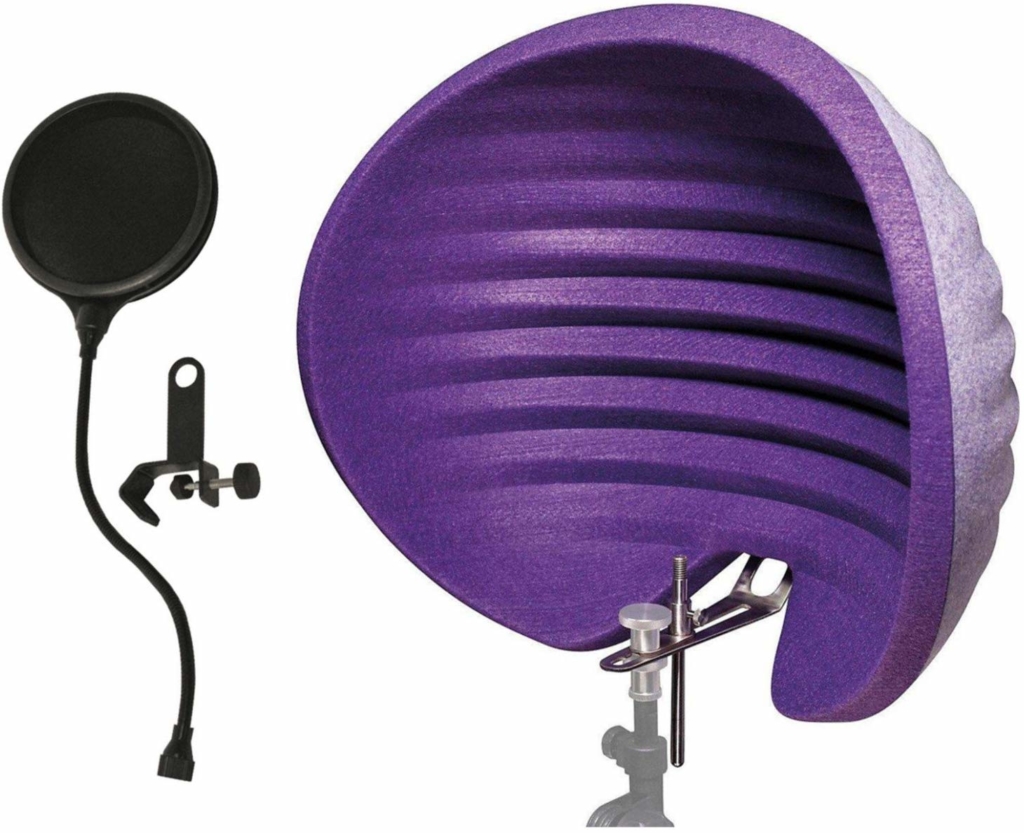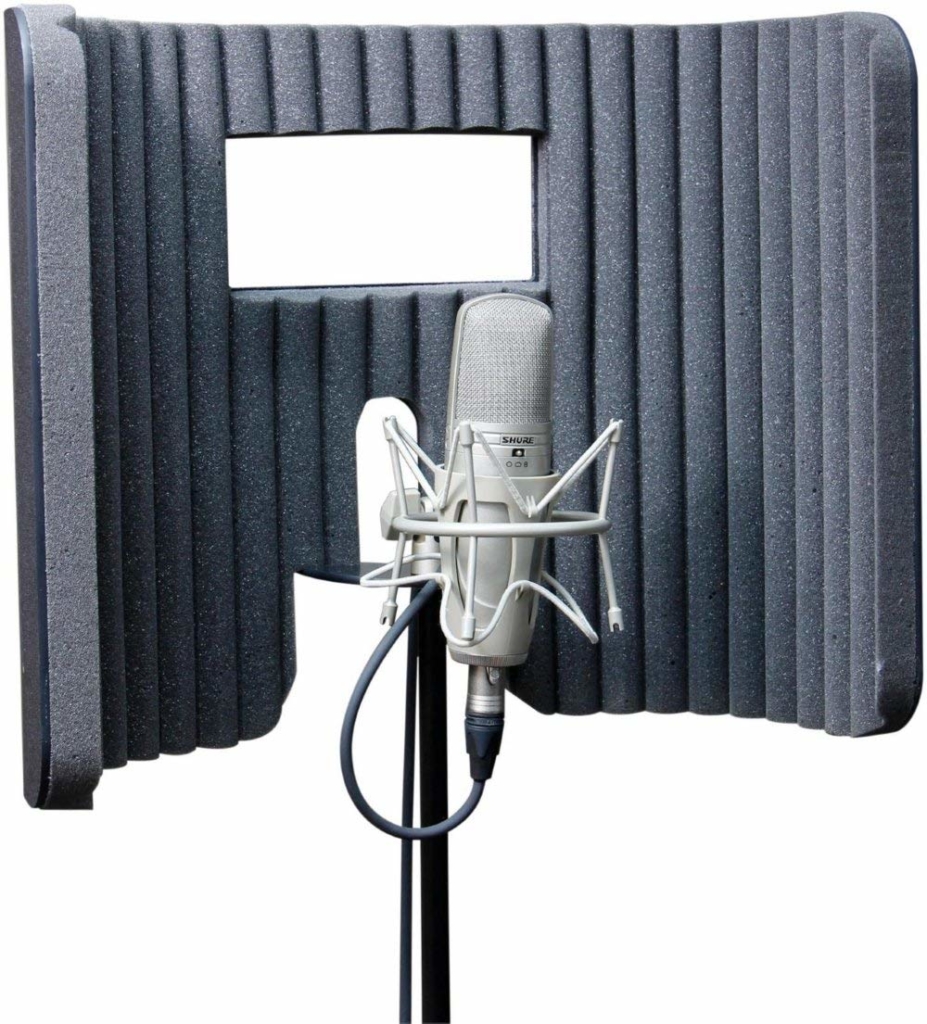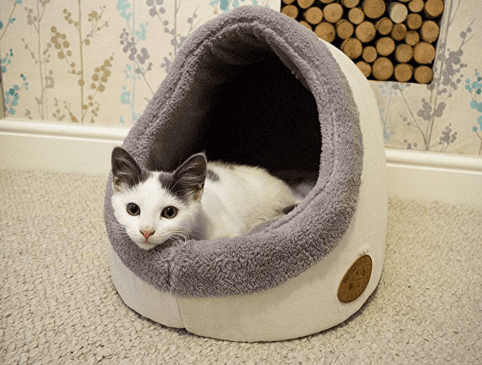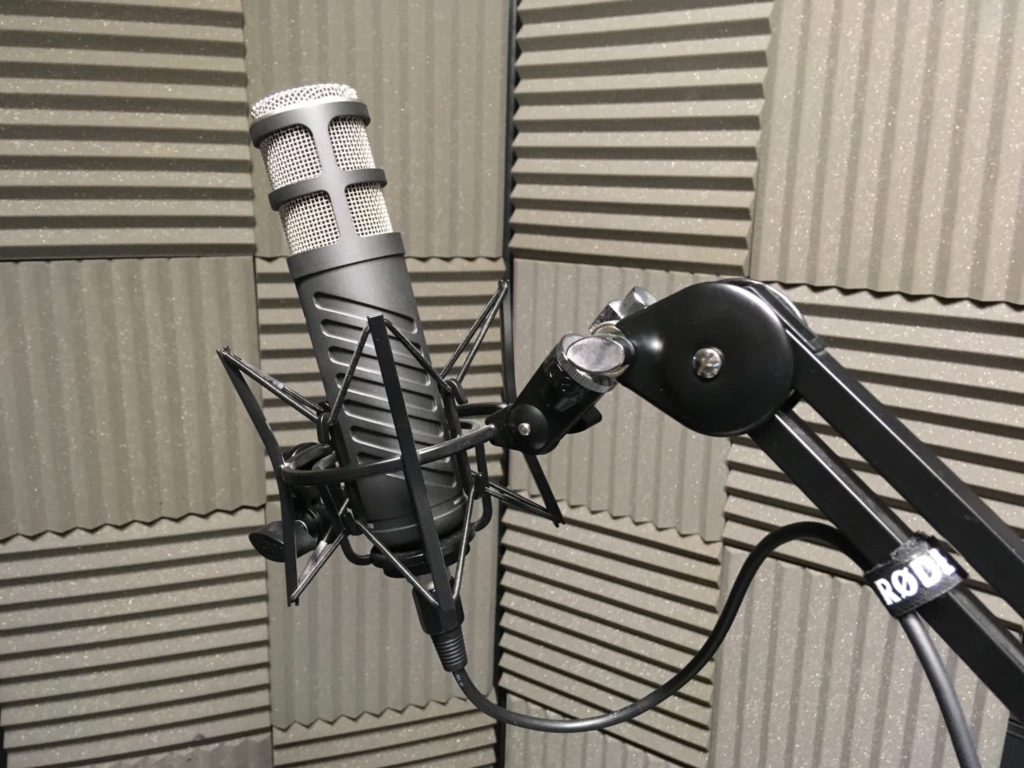Should You Shield Your Sound? Why Use a Podcast Microphone Shield
Sometimes, your recorded tracks have room noise, or a reverberating tinniness to your voice. There are many ways to reduce extra noise, such as using the right mic, in an area with soft surfaces. You can also remove background noise in the editing process, using a tool like Audacity or Alitu. Another tool to reduce reverberation and room noise is a microphone shield.
A shield may seem like the most obvious solution. Just wrap a wall around that mic! Like any other tool you use in podcasting, microphone shields come with their pros and cons. I, personally, thought they were the greatest thing to happen to podcasting since talking. Let me show you some types of acoustic shields, and some ideas about sound.
Some of these acoustic shields can be expensive, and look like exciting sci-fi movie props. Others are reasonably priced, and less distracting. If you’re handy with tools and patient, you can make one for a fraction of the cost.

The Aston Microphones Halo looks like something out of a James Bond movie. This cozy soft bubble is made out of sustainably produced PET felt (from plastic bottles). It filters out sound from above, below, and the sides. It comes in black, or purple and lilac. If the look of your studio is as important to you as your sound, then this microphone shield is well worth the $299.

Many voice actors dislike microphone shields because they can’t keep their text at eye level, or see the people they work with. The Primacoustic Voxguard VU solves that, with a plexiglass window. The plastic shell lined with acoustic foam is a much less expensive microphone shield, at $99. I have used the Primacoustic Voxguard model without the window, with no complaints.
Portable and Inexpensive
Portability is taken very seriously with the TroyStudio Portable Sound Recording Vocal Booth Box. Essentially, it’s a foldable cloth covered box, lined with panels of acoustic foam. if you need to record remotely, this can fit in your kit bag easily. It’s reasonably priced, at $49.99. However, it would force you to nearly stick your head inside the box, to get coverage between your mouth and the mic. This could be uncomfortable and distract from your performance.
DIY Microphone Shield
It’s not very difficult to make your own acoustic shield. There are as many different tutorials for “how to make a microphone shield” as there are people who use microphones.

Essentially, you cut pieces of acoustic foam to fit a cardboard semicircle, the inside of a cutaway wastepaper basket, a folding storage box, or even a ring binder, and secure the panels to the inside. If you’re using a tabletop mic, you can set it on the table around the mic. if you’re using a mic stand, you need a clamp to secure it. As long as you’re careful with measuring, knives, and spray adhesive, it’s not the worst way to spend an afternoon.
The cutest option
Need a microphone shield that makes you feel cozy? Try a dome-shaped cat bed. Set this around your mic and not only will you save a few bucks, but you’ll feel relaxed as well. Just don’t let your pets see it, or they’ll want to be in your podcast too.

What can’t a mic shield do?
A mic shield isn’t going to make up for a reflective room, lawnmowers outside, or bleed from your co-host. There really is no substitute for a good room or environment.
When using a microphone shield, you need to make sure that your back is to a wall. You also have to make sure that wall is not reflective. Hanging a sound blanket (or any blanket, really), will help eliminate that reflection. If you’ve been thinking about getting rid of the Star Wars quilt that Mom got for your bed when you were seven, it now makes a trendy vocal booth insulator.
You can always use your DIY skills to add foam panels to the walls. Not only does this reduce reverberation, it makes you look Really Serious.

Microphone shield manufacturers talk about their kit being portable. Despite being lightweight, many don’t fold or collapse. They’d be really annoying to carry on the tube or your bicycle.
Another negative point about microphone shields is that they can force you to hold your head in a particular position for too long. This can tire you out, and restrict your throat. A shield can affect how you relate to your text, or other people in the room. If you’re working alone and without a script, you may not mind. Otherwise, this is an important consideration.
Sometimes, you just need to make a pillow fort, or record in a closet full of nice cozy sweaters. If you use a acoustic shield, it’s not a bad idea. You should embrace other good practices in noise reduction as well.
Need More Help With Podcasting?
I used to think that a microphone shield would solve all my room noise problems. Like all aspects of podcasting, it’s much more complex than I thought. Everything you learn about podcasting, whether it’s sound treatment, scripting, or interviewing, enhances your craft and makes your podcast unique.
At Podcraft Academy, we have tons of downloadable resources, tools, and community support to help you make a compelling show. Join us, and learn more!

